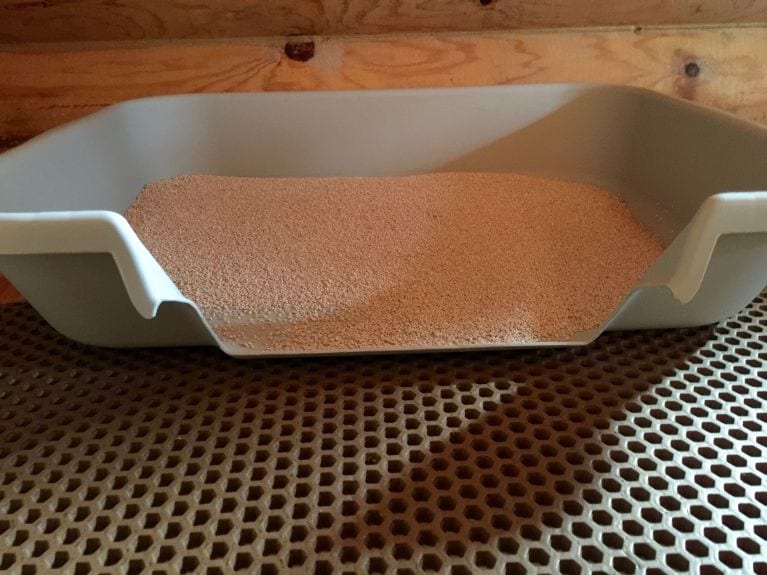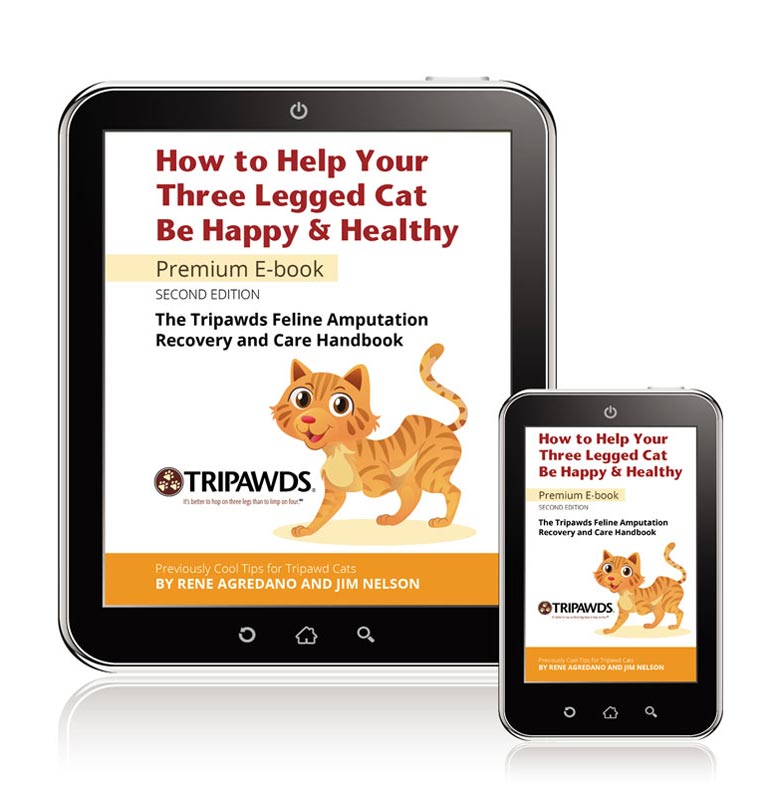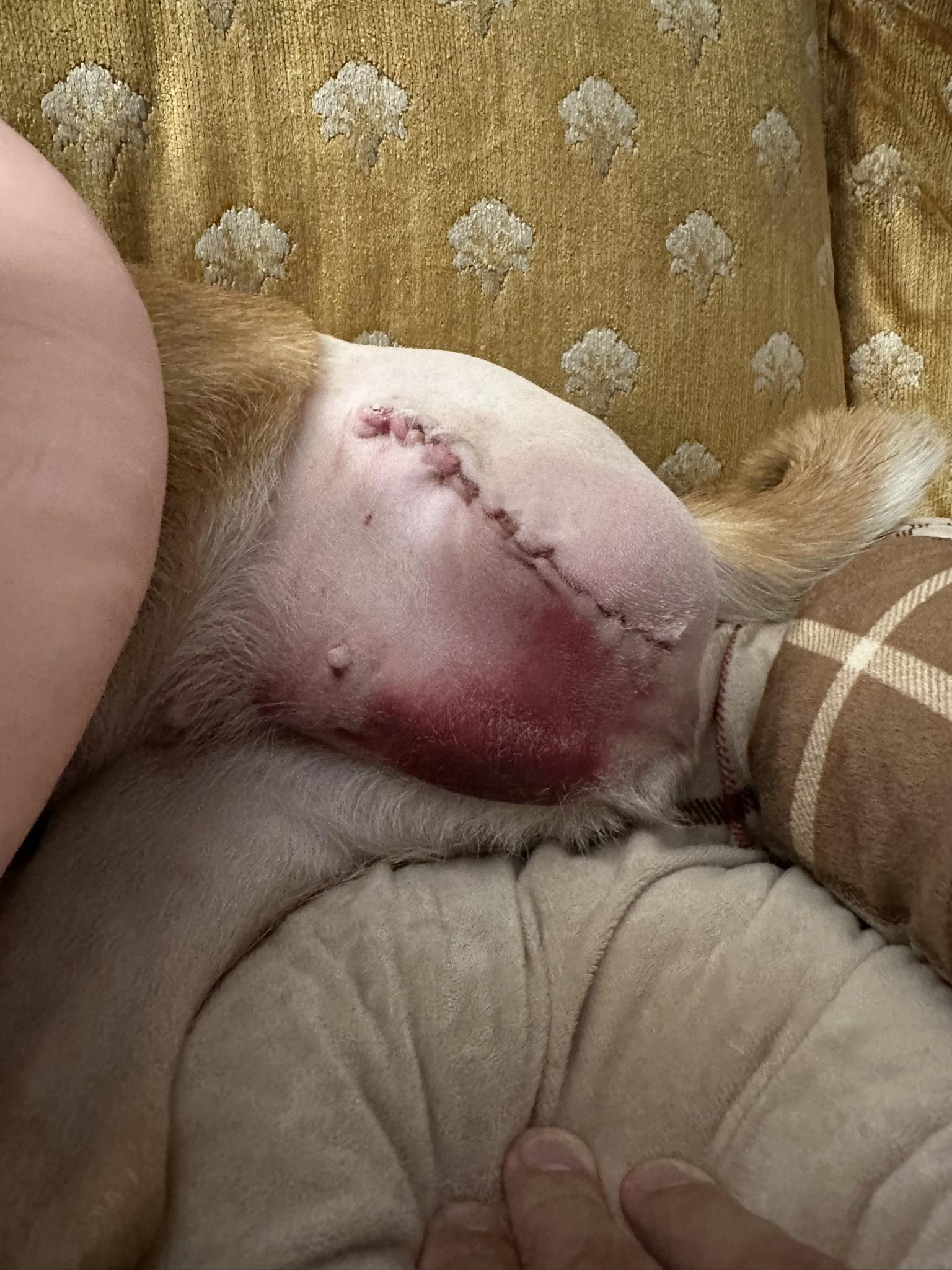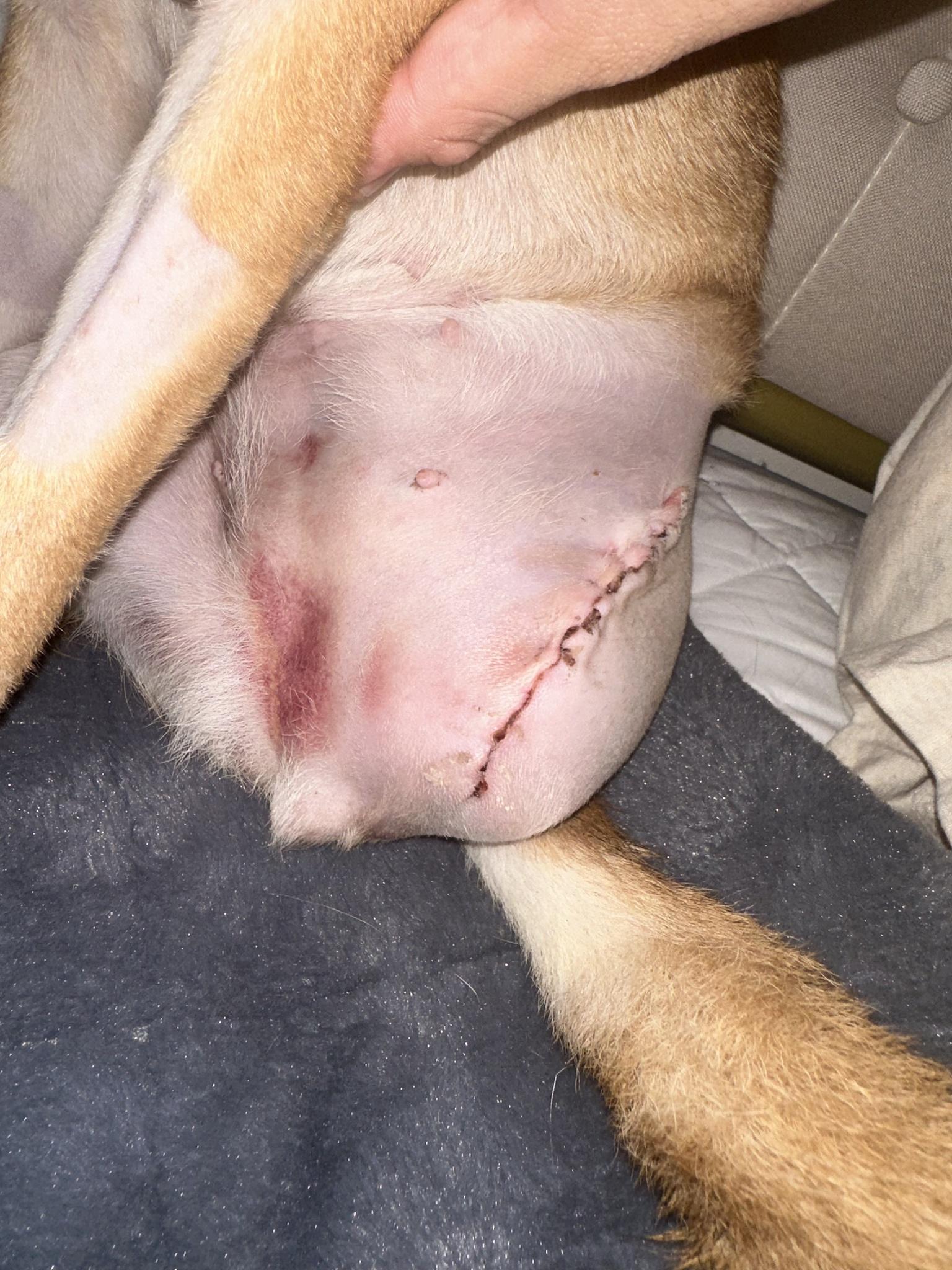Tripawd Pain Management Tips for a Better Recovery
Discover tripawd pain management tips to support a better recovery and keep your three-legged pet happy and healthy.
Jerry’s first posts from his osteosarcoma diagnosis and amputation surgery recovery in late 2006, and discussion about caring for new canine amputees.
Discover tripawd pain management tips to support a better recovery and keep your three-legged pet happy and healthy.
When Gabapentin is not working post-op, here’s why Pregabalin for Tripawd amputation pain might be a better remedy for nerve pain.
How can Sensory Re-education help ease nerve pain in dogs after surgery? Find out with Ilaria Borghese on this episode of Tripawd Talk Radio.
Take the 2023 Tripawds Quality of Life Survey for cats and dogs, to help pet parents know what to expect after amputation, or when adopting.
Constipation is a normal amputation surgery side-effect in cats and dogs. But there’s always a chance your Tripawd cat is not pooping because of other reasons. Usually the cause is nothing to panic about. So before you do, ask yourself a few important questions.

It’s not uncommon for a new member to post because their cat is not using the litterbox after coming home from amputation surgery. But it’s important to rule out any medical issues took so you want to always talk to your vet about your concerns.
While you wait for your vet discussion, here are some pawesome questions to ask about your cat’s litterbox habits after amputation, all of them courtesy of Purrkins’ mom, Holly.
Why is your cat not using the litterbox?
Did this just start happening, or has it happened before?
Is your cat straining to poop, vomiting when pooping?
Do you notice if your cat’s poop is hard and dry?
Are there poop balls outside of the litterbox box?
If so that is most likely a constipated kitty.
What is the literbox setup?
Where is your cat pooping? In the vicinity of the box? Somewhere else?
How many litter boxes do you have in your household? If you have multiple cats, do you have at least one litter box per cat?
What type of litter are you using? Has the litter type or brand been changed recently?
Is the litter box covered? If so, take the lid off.
Is the box big enough to comfortably turn around in for your new Tripawd cat? Is there easy access Can your cat hop in and out easily with no issues?
What about the box location? Is the litterbox located in a high-traffic area in the home?
Is the box in a place where he would feel trapped when pooping? If you have other cats, your new Tripawd cat might be thinking they can ambush him in the box.
When cats feel the most vulnerable, it takes longer to poop.
Is your cat’s litterbox kept clean? This is critical! No one wants to hop into a dirty box.
Once you know the answers to these questions you can have a productive chat with your veterinarian. They may prescribe an over the counter cat laxative to move things along. If your cat is still constipated, they may want to do some tests and possible a different motility drug to get his poop moving.
Keep your vet in the loop, and you can always ask the community for support in the Tripawds Three-Legged Cat Forum.
A big thank you to @purrkins Holly for her terrific insight on three-legged (and four-legged) cats!

One of the most worrisome things about a new Tripawd’s recovery is constantly wondering: is my cat or dog’s amputation bruise normal or not? Today let’s look at some before and after photos of bruising. Hopefully these will put your mind at ease.

First you should know that bruising is normal. It’s a side effect of amputation surgery. A big bruise happens because skin, muscles and tissues have been cut in order to remove the bad leg.
The amputation site becomes traumatized by the leg removal, and bruising appears soon after surgery.
A cat or dog’s amputation bruise looks worse before it gets better. The day after surgery, skin around the incision area will start turning into an angry, dark purplish color. Then for about the next five days, the bruises will lighten into shades of green, yellow, and light brown.
A dog’s amputation bruise looks bad, but don’t panic. But most bruises will fade over the next two weeks.
Does this look concerning or just bruising?

There’s not much you need to do about the bruising within the first three days unless your vet instructs you to do otherwise. Gentle heat and ice therapy can help minimize discomfort 72 hours after surgery. According to animal massage expert Wendy Richardson, you should wait until three days after amputation surgery to apply heat and ice therapy.
It’s even better today. Almost no red and a lot of the area is a very faint yellow now.

It’s a Tripawd’s amputation wound care that’s more important. But you don’t have to obsess or go overboard to keep it sterile. Just keep the wound area clean, don’t bandage or apply topical medications unless your vet tells you to.
Most amputation incisions need minimal care during recovery. But you do need to watch for signs that something is not normal, such as:
Is there any gross, cloudy, or stinky fluid draining from the incision? Normal drainage (a “seroma“) has a pink color, but is clear and doesn’t smell. If you suspect the discharge is not normal tell your vet.
If sutures or staples fall out, this might be a sign that your dog’s incision is infected. The skin cannot heal, so the sutures or staples fall out. Also, if you see a wide gap (larger than ¼ inch) between the wound or tissue sticking out from the wound, call your vet immediately.
Again, this is probably a seroma, which is a combination of blood and bodily fluid buildup that drains at the incision site. Seromas usually aren’t serious. Sometimes they need draining in a vet’s office. But tell your vet your dog is having one, just to be safe. And do your best to prevent a seroma by keeping your dog calm for at least a week after amputation. To much activity can ramp up the immune system and lead to excess fluid buildup.

Wondering what you can expect two weeks after amputation surgery for your dog or cat? Here are 10 common recovery situations pets experience.
Curious about how a dog heals after amputation surgery? Banksy’s Tripawd healing story shows how he recovered, in a guest post by mom Mary.
How one vet tech is helping dogs’ amputation surgery recovery by making it easier to use a sling and recovery shirt.
When can new Tripawd cats live with other family felines? Learn how to introduce new amputee dogs and cats to other pets in the home.